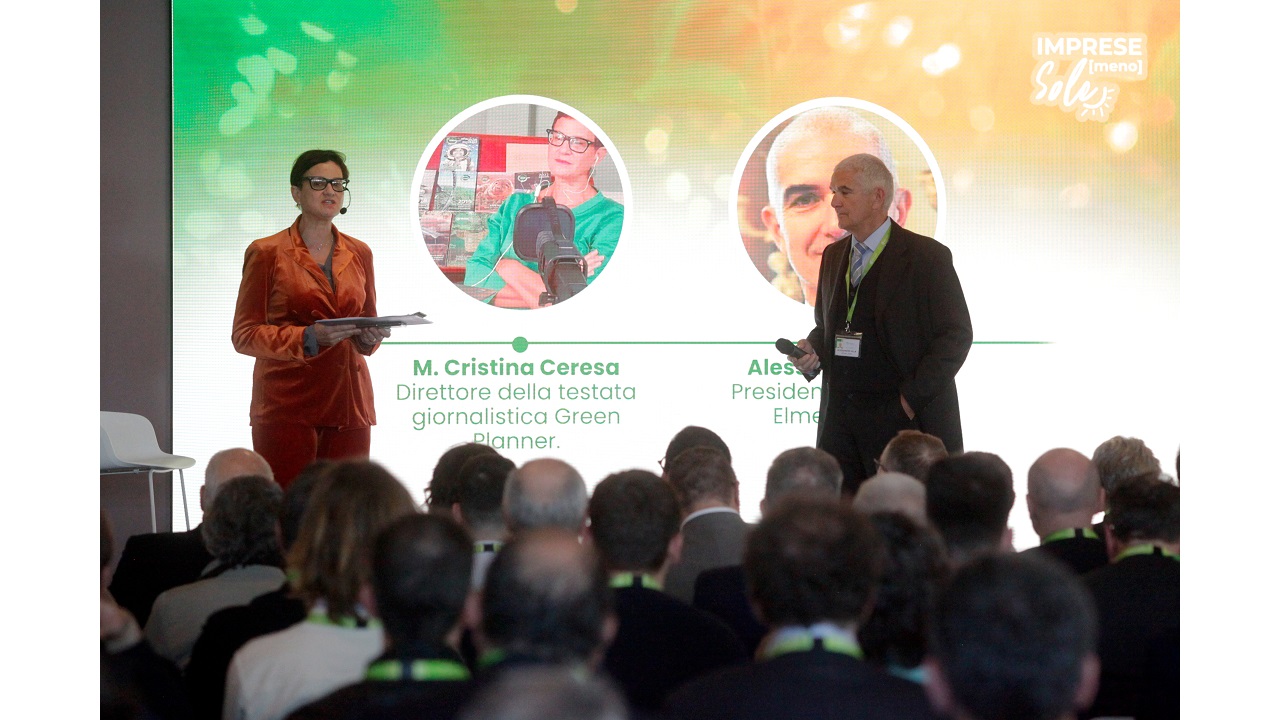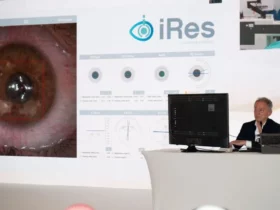Elmec Solar, the Elmec group company that installs and maintains residential and industrial photovoltaic systems, has decided to help companies in the difficult energy transition towards green energy.
To do this, he created and hosted the event “Imprese [meno] Sole, your company is not alone in tackling the issue of green IT and energy transition!”, which was held on March 28 at the Elmec Informatica Technological Campus.
Elmec Solar and the event for the energy transition
The 2022 energy crisis has generated an alarming increase in the PUN (Single National Price), with a peak reached of +490€/MWh last September.
Therefore, Italian companies have had to face a considerable challenge: to find a way to adopt sustainable energy supply solutions in the short term.
In this regard, according to data from Italia Solare, in the Commerce & Industry sector in 2022 there was a 6.7% increase in solar plants, after having already recorded a 5.3% growth in 2021.
However, the question remains: if it is true that the emergency has partially subsided over the months, how can a company protect itself in the long term from fluctuations in the fossil fuel markets?
Elmec Solar has therefore decided to answer this question by organizing the event “Imprese [meno] Sole, your company is not alone in tackling the issue of green IT and the energy transition!”.
“With the Business event [meno] Sole we wanted to involve institutions, universities and operators in the sector to convey two important messages to Italian companies: the benefits linked to sustainable procurement and the importance of remote self-consumption phenomena and energy communities”, said Alessandro Villa, CEO Delegate of Elmec Solar, who continues:
“During the conference, the importance for companies of becoming part of an energy community emerged, both because it makes consumption more efficient and benefits from the contribution of community members, and because it allows for the creation of common value. Companies are called to seize this opportunity, drawing an example from other realities that are already experimenting with this approach and that have experienced the economic and moral value of being sustainable through renewable energies”.
The first roundtable
The event saw the journalist Christine Ceresabetween theand Top Voices of Linkedin on sustainability topicsdress as a moderator and opened with the opening speech by Adrian Fartade, science popularizer and writer, which illustrated the fundamental relationship of our planet with the sun.
“As humans we have many talents, the greatest is to continue to imagine innovations that allow us to face climate challenges knowing how to exploit the main resource we have, the Sun” he said at the beginning of his speech Speeded up.
In the first roundtable, by title “The challenges of energy today”, Raphael Cattaneoformer Councilor for Climate and Sustainability and now Undersecretary with responsibility for International and European Relations at the Lombardy Region, illustrated the policies that the Lombardy Region will make available to companies in support of the energy transition.
“The Regional Energy, Environment and Climate program drawn up by the Lombardy Region – said Cattaneo – foresees two steps: the first, the reduction of 35% of all energy consumption over the next seven years; the second at the same time is the doubling of energy production from renewable sources. The most important source we have today in Lombardy is hydroelectricity and the second is biomass, but what we need to focus on over the next 10 years is solar photovoltaics. We have estimated that the incremental power to be installed in Lombardy by 2030 is 8 gigawatts which is equivalent to 8,000 hectares of occupied land. For this it is necessary that at least 50% be installed on the roofs”
Fabio Tarocco, Energy Area Manager at Univa Servizi, underlined the impact of energy costs on local businesses: “In the face of a downward trend in the PUN and in the costs of methane gas, some critical factors need to be monitored. The presence of an average temperature +4.8° higher than normal temperatures has allowed a saving in gas consumption in Italy of -38% in general and -13% in the industrial sector.
However, poor hydraulicity with a snow cover below 50% of the average has reduced the energy input from hydroelectric reservoirs. Companies must therefore increasingly look to solar energy as a stable resource”.
Following, Salvatore Alexander CasaHead of the electricity market at Elemens – a consultancy firm in the energy sector – spoke about the current state of the market, introducing the practices and processes necessary to create a CER (Renewable Energy Community) net of incentives and deductions: “2023 opens with a clear stabilization of volatility and with a price level almost halved compared to the average of 2022. But it must be considered that the cost of electricity varies over time and until the system is totally decarbonised it will be exposed to the trend of commodity markets.
Consequently, the stabilization of the electricity supply cost is, in most cases, possible only thanks to the purchase of renewable energy whose economic impact is mainly linked to the cost of installing the production plant alone”.
A second round table
The Elmec Solar event to encourage the energy transition of companies also saw a second round table entitled “Renewable Energy Communities (CERs): what’s new under the sun”.
Sergio OliveroHead of Business & Finance Innovation of the Energy Center of the Turin Polytechnic, recounted the experience of the creation of the first CER in Italy, highlighting its advantages and improvements.
Instead Roberta Pezzetti, Director of SMARTER at the University of Insubria, focused on the social impacts of energy communities. “Today the territories in Italy compete to attract finance, businesses, brains and the CER must be a tool for the creation of value and its social distribution. The risk is that we arrive at many small CERs which are unlikely to generate a positive impact on the country system; instead we must aim for districts based on public-private partnerships”.
Furthermore, it must be kept in mind that the road traced by the energy transition supported by Elmec Solar translates not only into favor for the environment in terms of sustainability, but also into economic value for the company.
Indeed Antonio De PaolaScientific Project Officer of the Joint Research Center of the European Commission, showed the possibility of creating a CER without modifying the existing electrical infrastructure, with prosumers (i.e. producers and consumers of electricity from renewable sources) who will introduce the energy produced and not consumed through an exchange meter.
Furthermore, each member of the CER retains the right to choose its own energy supplier drawing from the public grid, while the shared energy is evaluated ex post, based on the aggregate exchanges of energy with the grid.
“The key factor for this model to work effectively is the introduction of analysis tools that align energy demand and generation in the CER, considering the number of prosumers and consumers, as well as the geographical location” he says Antonio DePaola. “In this way it will be possible to allow the preparation of adequate business plans that make the community efficient”.
Finally, at the Elmec Solar event, two outstanding companies from the Lombardy region took part and have already started the energy transition towards photovoltaics. We are talking about Filippo ArcioniPresident of Villa Erba SpA of Cernobbio, International Exhibition and Congress Centre, who illustrated the importance of knowledge of the development of CERs from a regulatory point of view, and of Michelle ConternoChief Executive Officer of LATI Industria Termoplastici Spa – Benefit company, which showed the benefits of investing in its own solar plant built in 2021.
Specifically, the solution adopted by the Varese company guarantees an annual production of approximately 120,000 kWh, with a return on investment in a maximum of 7 years and 60 tons of CO2 avoided each year. Basically the equivalent of a plantation of 1800 trees.
For more information you can click on the following link.















Leave a Reply
View Comments